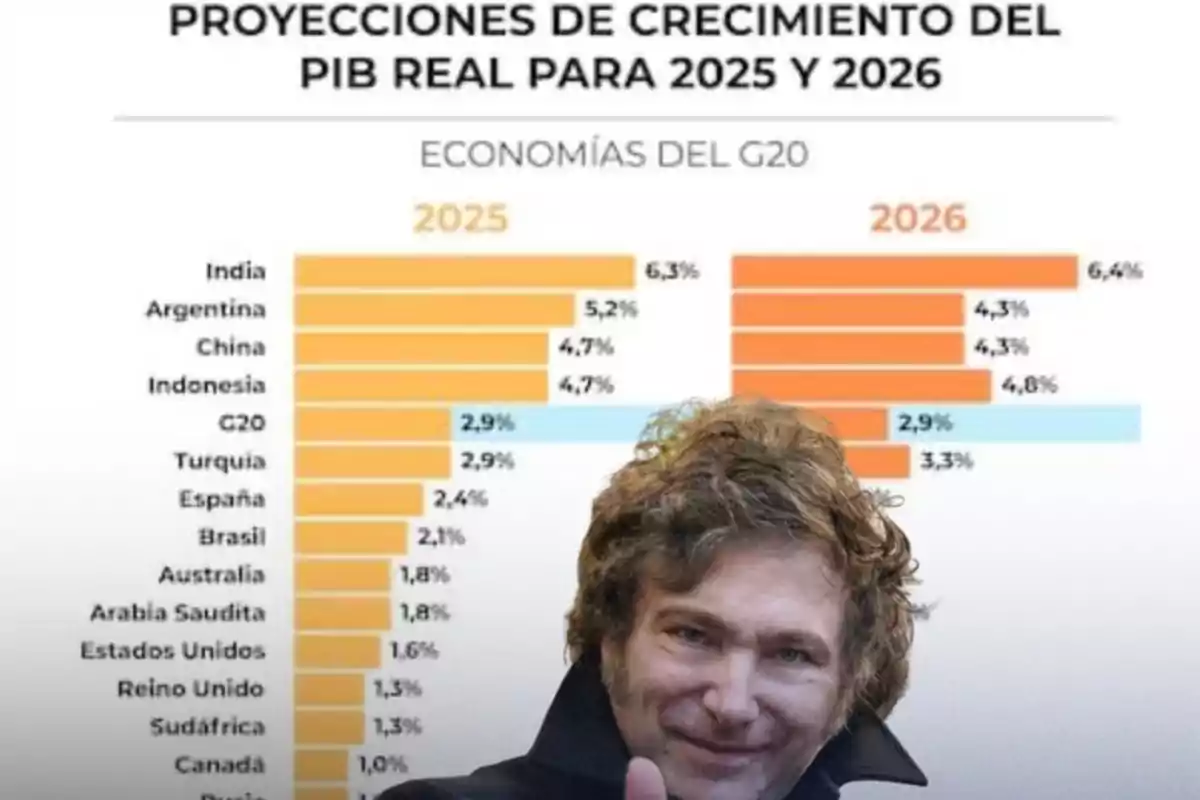
Thanks to Milei, Argentina will be the second country with the highest growth in 2025.
Additionally, for 2026, the OECD also forecasts that the Argentine economy will grow by a significant 4.3%
The Organization for Economic Cooperation and Development (OECD) revised downward its growth estimate for the entire world, which also affected Argentina, reducing it from the 5.7% projected in March to the current 5.2% for 2025.
Despite the cut, the report highlights that the country will be the second fastest-growing GDP this year, only surpassed by India, in a global scenario shaped by trade tensions and the tariff war.
For 2026, the OECD forecasts that the Argentine economy will grow by 4.3%, once again placing it among the countries with the largest increase within the G20.

According to the organization, this recovery will be driven by an improvement in private consumption and a rebound in investment, supported by the increase in real disposable income, better financing conditions, and a positively evolving business climate.
The report also mentions that the recent elimination of capital controls, known as the "cepo," will strengthen confidence in the economy and encourage investment.
This progress is taking place in a context of marked global slowdown. The OECD forecasts that global product growth will be only 2.9% in 2025, a decrease compared to the 3.3% estimated for 2024.
The organization indicated that Argentina's economic recovery began in the third quarter of 2024, after a deep recession in the first half of the year caused by the previous Kirchnerist government.

During that period, economic activity grew by more than 18% on an annualized basis, and in the last quarter of the year exceeded 5%. This rebound was mainly driven by the dynamism of private consumption, investment growth, and the strong performance of exports.
Recent indicators support the continuation of this improvement. Credit to the private sector showed signs of growth, while both consumer confidence and the business environment recorded steady improvements. Meanwhile, year-on-year inflation fell from 211% in December 2023 to 47% in April 2025, and the unemployment rate dropped from 7.7% to 6.4%.
During 2024, thanks to Milei's government, the country managed to reverse the huge deficit recorded in 2023, closing the year with a surplus for the first time in decades. Growth in gas production made it possible to reduce the need to import fuels, also generating a favorable trade balance in that sector.
On the fiscal front, the national government achieved a financial surplus of 0.3% of GDP in 2024. The report highlights that the official commitment to achieve a positive primary result in 2025 remains. In parallel, the Central Bank put an end to monetary issuance and established a new exchange rate scheme with floating bands, setting a monthly depreciation rate of 1%.
The elimination of most foreign exchange restrictions, according to the OECD, reinforced market confidence and encouraged capital inflows.
According to the projection table, gross fixed capital formation will experience an expansion of 21.7% in 2025 and 14.9% in 2026. Regarding foreign trade, exports will register an increase of 11.2% next year, although their growth rate will slow to 6.4% in 2026.
Meanwhile, imports will advance by 23.9% in 2025 and 14.5% in 2026, driven by improved purchasing power and economic openness.
More posts: